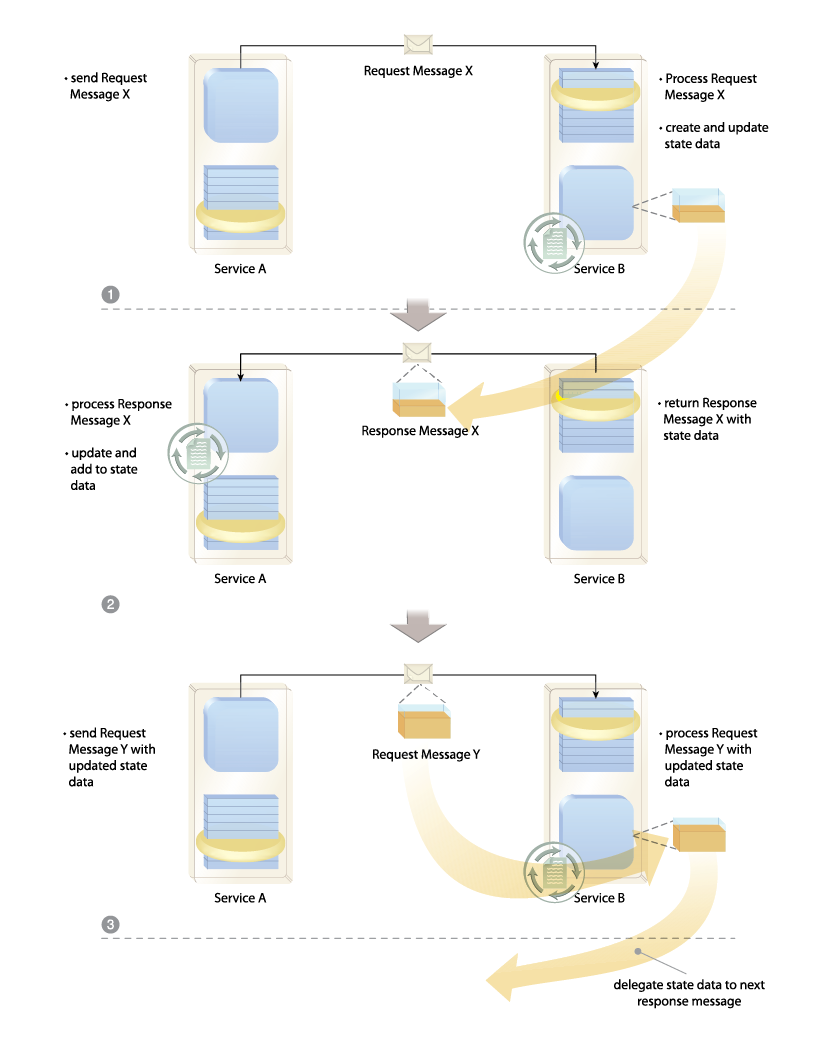Service API Patterns, Protocols, Coupling Types, Metrics > Service API Design Patterns > State Messaging
State Messaging
How can a service remain stateless while participating in stateful interactions?
When services are required to maintain state information in memory between message exchanges with consumers, their scalability can be comprised, and they can become a performance burden on the surrounding infrastructure. With the application of the State Messaging pattern, instead of the service maintaining state data in memory, it moves the data to the message. During a conversational interaction, the service retrieves the latest state data from the next input message.

Service A, acting as a service consumer, issues Request Message X to Service B (1). Service B creates the necessary data structures to maintain the necessary state and updates the data structures after processing this message. Service B then adds the state data to Response Message X, which it then returns back to Service A (2). Service A processes the response and then generates Request Message Y containing updated state data, which is then received and processed by Service B (3).
This pattern is covered in Module 13: Advanced Service API Design & Management.
For more information regarding service API design & management courses and accreditation, visit the Service API Specialist program page.
